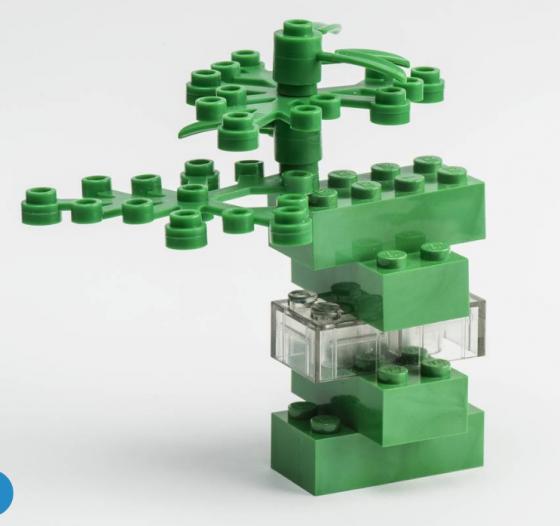Green Building Community
Lego Looks to Plants as Building Blocks for Bricks
Posted by: Kalyani.rc // Passive House / Sustainability Enthusiast

Danish toy maker, seeking to decrease its carbon footprint, considers corn and wheat as an alternative to petroleum-based plastic.
Lego makes billions of bricks a year out of petroleum-based plastic, but it is experimenting with more wholesome ingredients: wheat and corn.
The Danish toy maker, reported a 6% rise in 2016 sales, has been working for two years to reduce its carbon footprint with an alternative to the plastic that has made up its bricks since 1963.
Lego expects the process of finding a better brick to continue for years, possibly up to 2030. The company is focused on finding a new material that comes from plants, recycled material or perhaps a mix of both.
Among the many prototypes, it has developed are ones made from wheat and corn proteins, from which Lego extracts sugars to make a brick. Sugars can be extracted from a range of crops and other materials, including trees and household waste. The prototypes still need work, says Lego’s vice president of sustainability, Tim Brooks, given their tendency to marble on the sides and fit together poorly.
"We are looking for consistent color, shininess, and even that distinctive Lego sound when you mix them together," he said. The new bricks also need to be safe, high-quality and durable, said Mr. Brooks, who plans to hand down to his 3-year-old son a Lego train set that he played with as a child. "A key part of the Lego experience is that it lasts so long," he said. "If your bricks decomposed in 15 years, you wouldn’t get that magic."
Another challenge is finding materials that allow Lego to get the precise tolerances among bricks that it needs, which at two to three microns amount to less than the thickness of a human hair.
Plant-based materials aside, Lego is also considering turning to substances made from chemical recycling—by which a material is broken all the way down to its component chemicals and then built back up again—to eliminate problems with color and quality that occur in ordinary recycling.
While Lego briefly looked at using a material made from unconventional carbon sources such as air and algae, that industry is still in its infancy and therefore a less likely solution.
"Perhaps the biggest challenge for Lego is getting hold of enough plant-based material. Biomaterials companies are reluctant to plow money into plants and machinery without enough guaranteed orders in place, meaning Lego would need to build demand by joining with companies like IKEA, Unilever PLC, Nike Inc. and Danone SA that share its interest in moving to sustainable materials."
While Lego develops its new brick, the company is improving sustainability in other ways. It recently moved its products into smaller boxes, cutting packaging down by 18% and taking about 4,000 trucks off the road each year globally.
Please be kind and respectful!
Please make sure to be respectful of the organizations and companies, and other Rate It Green members that make up our community. We welcome praise and advice and even criticism but all posted content and ratings should be constructive in nature. For guidance on what constitutes suitable content on the Rate It Green site, please refer to the User Agreement and Site Rules.
The opinions, comments, ratings and all content posted by member on the Rate It Green website are the comments and opinions of the individual members who posts them only and do not necessarily reflect the views or policies or policies of Rate It Green. Rate It Green Team Members will monitor posted content for unsuitable content, but we also ask for the participation of community members in helping to keep the site a comfortable and open public forum of ideas. Please email all questions and concerns to admin@rateitgreen.com

